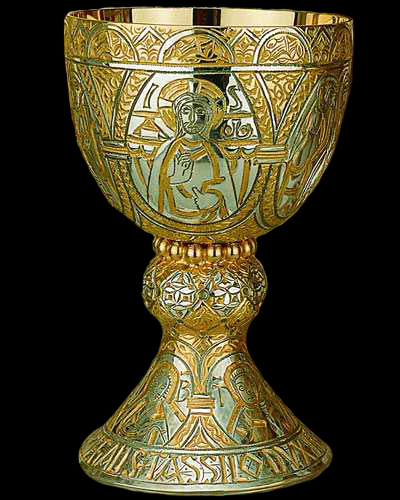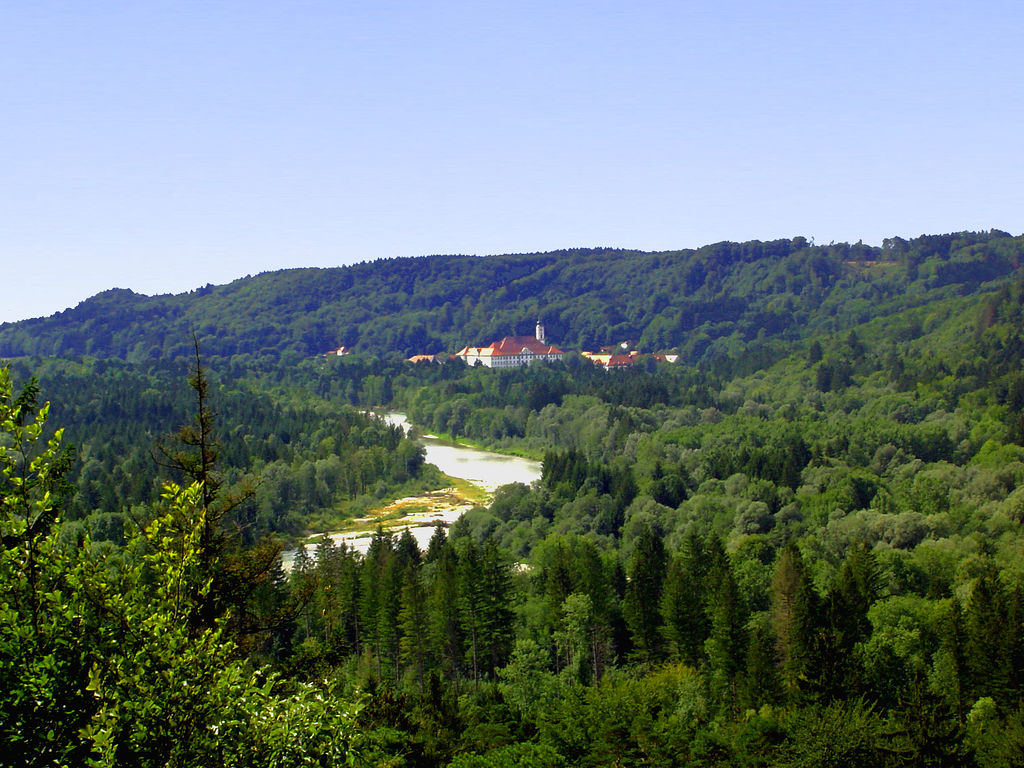|
Waldwirtschaft
The Waldwirtschaft is a tavern with a large beer garden just south of Munich. It is situated in the municipality of Pullach in the ward of Großhesselohe on the high bank (fluvial terrace) of the Isar. Sepp Krätz has been the publican since 1981, and has run the Hippodrome Festival Tent at the Oktoberfest from 1995 to 2014. The tavern is a two-winged hip roof building dating from the middle of the 19th century and is a listed building together with the neighbouring Chapel of the Holy Trinity. History The earliest mention of the property dates back to 776 and a dairy in the possession of Tassilo III, Duke of Bavaria, which, together with the hamlet of Baierbrunn, was gifted to the Schäftlarn Abbey in the hope that his soul might find everlasting peace. Two hundred years later the dairy left church ownership and, in 1301, the Duke's steward, Konrad von Baierbrunn, sold the property, described as "woodland with dairy", to the Holy Spirit Hospital of Munich. The Hospital made u ... [...More Info...] [...Related Items...] OR: [Wikipedia] [Google] [Baidu] |
Waldwirtschaft 6887b
The Waldwirtschaft is a tavern with a large beer garden just south of Munich. It is situated in the municipality of Pullach in the ward of Großhesselohe on the high bank (fluvial terrace) of the Isar. Sepp Krätz has been the publican since 1981, and has run the Hippodrome Festival Tent at the Oktoberfest from 1995 to 2014. The tavern is a two-winged hip roof building dating from the middle of the 19th century and is a listed building together with the neighbouring Chapel of the Holy Trinity. History The earliest mention of the property dates back to 776 and a dairy in the possession of Tassilo III, Duke of Bavaria, which, together with the hamlet of Baierbrunn, was gifted to the Schäftlarn Abbey in the hope that his soul might find everlasting peace. Two hundred years later the dairy left church ownership and, in 1301, the Duke's steward, Konrad von Baierbrunn, sold the property, described as "woodland with dairy", to the Holy Spirit Hospital of Munich. The Hospital made us ... [...More Info...] [...Related Items...] OR: [Wikipedia] [Google] [Baidu] |
Pullach
Pullach, officially Pullach i. Isartal, is a municipality in the district of Munich in Bavaria in Germany. It lies on the Isar Valley Railway and is served by the S 7 line of the Munich S-Bahn, at the Großhesselohe Isartalbahnhof, Pullach and Höllriegelskreuth railway stations. The headquarters of the intelligence agency of the German government, the Bundesnachrichtendienst (BND), was located in Pullach before the agency moved to Berlin. The new headquarters was completed in 2017 and opened officially in February 2019. Until the move to Berlin, ‘Pullach’ was a metonym for ‘the BND’ just as ‘Langley’ is for ‘the CIA’. Geography Pullach sits on the western bank of the Isar river, just south of Munich. Neighbouring municipalities On the opposite bank of the Isar, lies the municipality of Grünwald, Bavaria, with the municipality of Baierbrunn further south. The municipality is bordered to the north by Munich, specifically the suburbs of Solln and Harlaching. ... [...More Info...] [...Related Items...] OR: [Wikipedia] [Google] [Baidu] |
Beer Garden
A beer garden (German: ''Biergarten'') is an outdoor area in which beer and food are served, typically at shared tables shaded by trees. Beer gardens originated in Bavaria, of which Munich is the capital city, in the 19th century, and remain common in Southern Germany. They are usually attached to a brewery, beer hall, pub, or restaurant. History Facilities of this kind existed for example in Bamberg since 1605 under the German term "Bierkeller" ("Beer cellars"). At that time, the Archdiocese of Bamberg was directly subordinated to Rome and not yet to the Duchy of Bavaria. Hence, the first "Biergarten" in the strict sense of the term and of the decree of 1812 by the Kingdom of Bavaria developed at the beginning of 19th century in Munich. While it is unknown which brewery was first, it was likely one of Munich's big six: Löwenbräu, Hofbräuhaus, Augustinerbräu, Paulaner, Hacker-Pschorr and Spaten. Seasonal limitations on when beer could be brewed were already in the ... [...More Info...] [...Related Items...] OR: [Wikipedia] [Google] [Baidu] |
Munich
Munich ( ; german: München ; bar, Minga ) is the capital and most populous city of the States of Germany, German state of Bavaria. With a population of 1,558,395 inhabitants as of 31 July 2020, it is the List of cities in Germany by population, third-largest city in Germany, after Berlin and Hamburg, and thus the largest which does not constitute its own state, as well as the List of cities in the European Union by population within city limits, 11th-largest city in the European Union. The Munich Metropolitan Region, city's metropolitan region is home to 6 million people. Straddling the banks of the River Isar (a tributary of the Danube) north of the Northern Limestone Alps, Bavarian Alps, Munich is the seat of the Bavarian Regierungsbezirk, administrative region of Upper Bavaria, while being the population density, most densely populated municipality in Germany (4,500 people per km2). Munich is the second-largest city in the Bavarian dialects, Bavarian dialect area, ... [...More Info...] [...Related Items...] OR: [Wikipedia] [Google] [Baidu] |
Fluvial Terrace
Fluvial terraces are elongated terraces that flank the sides of floodplains and fluvial valleys all over the world. They consist of a relatively level strip of land, called a "tread", separated from either an adjacent floodplain, other fluvial terraces, or uplands by distinctly steeper strips of land called "risers". These terraces lie parallel to and above the river channel and its floodplain. Because of the manner in which they form, fluvial terraces are underlain by fluvial sediments of highly variable thickness.Fairbridge, R. W., 1968, ''Encyclopedia of Geomorphology.'' Reinhold Book Company, New York.Blum, M., and T.E. Tonqvist, 2000, ''Fluvial responses to climate and sea-level change, a review and look forward.'' Sedimentology. v. 47 suppl. 1, pp. 2-48. River terraces are the remnants of earlier floodplains that existed at a time when either a stream or river was flowing at a higher elevation before its channel downcut to create a new floodplain at a lower elevation. Changes ... [...More Info...] [...Related Items...] OR: [Wikipedia] [Google] [Baidu] |
Isar
The Isar is a river in Tyrol, Austria, and Bavaria, Germany, which is not navigable for watercraft above raft size. Its source is in the Karwendel range of the Alps in Tyrol; it enters Germany near Mittenwald and flows through Bad Tölz, Munich, and Landshut before reaching the Danube near Deggendorf. At in length, it is the fourth largest river in Bavaria, after the Danube, Inn, and Main. It is Germany's second most important tributary of the Danube after the Inn. Etymology One theory is that the name ''Isar'' comes from the hypothetical Indo-European root ''*es'' or ''*is'', which generally meant "flowing water" and later turned into a word with a meaning narrowed to frozen water (hence English ''ice'', german: Eis) in Proto-Germanic; the name itself is mentioned for the first time in 763 as ''Isura''. An older theory is that it comes from Celtic words and the name ''Isar'' is a construction of the Celtic stems ''ys'' "fast, torrential" and ''ura'' "water, river". Accordin ... [...More Info...] [...Related Items...] OR: [Wikipedia] [Google] [Baidu] |
Oktoberfest
The Oktoberfest (; bar, Wiesn, Oktobafest) is the world's largest Volksfest, featuring a beer festival and a travelling carnival. It is held annually in Munich, Bavaria, Germany. It is a 16- to 18-day folk festival running from mid- or late-September to around the first Sunday in October, with more than six million international and national visitors attending the event. Locally, it is called , after the colloquial name for the fairgrounds, Theresienwiese. The Oktoberfest is an important part of Bavarian culture, having been held since the year 1810. Other cities across the world also hold Oktoberfest celebrations that are modeled after the original Munich event. During the event, large quantities of Oktoberfest Beer are consumed. For example, during the 16-day festival in 2014, were served, making it the year where the most beer was consumed at the Oktoberfest. Visitors also enjoy numerous attractions, such as amusement rides, sidestalls, and games. There is also a w ... [...More Info...] [...Related Items...] OR: [Wikipedia] [Google] [Baidu] |
Hip Roof
A hip roof, hip-roof or hipped roof, is a type of roof where all sides slope downwards to the walls, usually with a fairly gentle slope (although a tented roof by definition is a hipped roof with steeply pitched slopes rising to a peak). Thus, a hipped roof has no gables or other vertical sides to the roof. A square hip roof is shaped like a pyramid. Hip roofs on houses may have two triangular sides and two trapezoidal ones. A hip roof on a rectangular plan has four faces. They are almost always at the same pitch or slope, which makes them symmetrical about the centerlines. Hip roofs often have a consistent level fascia, meaning that a gutter can be fitted all around. Hip roofs often have dormer slanted sides. Construction Hip roofs are more difficult to construct than a gabled roof, requiring more complex systems of rafters or trusses. Hip roofs can be constructed on a wide variety of plan shapes. Each ridge is central over the rectangle of the building below it. The t ... [...More Info...] [...Related Items...] OR: [Wikipedia] [Google] [Baidu] |
Tassilo III, Duke Of Bavaria
Tassilo III ( 741 – c. 796) was the duke of Bavaria from 748 to 788, the last of the house of the Agilolfings. The Son of Duke Odilo of Bavaria and Hitrud, the Daughter of Charles Martell. Tassilo, then still a child, began his rule as a Frankish ward under the tutelage of his uncle, the Carolingian Mayor of the Palace Pepin the Short (later king) after Tassilo's father, Duke Odilo of Bavaria, had died in 748 and Pepin's half-brother Grifo had tried to seize the duchy for himself. Pepin removed Grifo and installed the young Tassilo as duke, but under Frankish overlordship in 749. Then, in 757, according to the ''Royal Frankish Annals'', Tassilo became Pepin's vassal and the lord for his lands at an assembly held at Compiegne. There, he is reported to have sworn numerous oaths to Pepin and, according to reports that may have been written much later, promised fealty to him and his sons, Charles and Carloman. However, the highly legalistic account is quite out of character for t ... [...More Info...] [...Related Items...] OR: [Wikipedia] [Google] [Baidu] |
Schäftlarn Abbey
Schäftlarn Abbey (Kloster Schäftlarn) is a Order of St. Benedict, Benedictine monastery on the Isar in Schäftlarn, south of Munich in Bavaria, Germany. History The monastery was founded in 762 by Waldrich, Bishop of Passau, Waltrich, a priest of noble family, on his own land. The monastery was dedicated to Saint Denis of Paris, Saint Dionysius of Paris. The first monks came from the cathedral monastery of Freising Cathedral, Saint Mary and Corbinian in Freising. In the tenth century the monastery was turned into a house for lay canons. During the next two centuries the monastery grew as a result of various gifts and endowments (among them the estates of Schwabing and Hesselohe). In 955 the monastery was destroyed by the Hungarians who were then making marauding incursions into Germany.Löffler, Kleme ... [...More Info...] [...Related Items...] OR: [Wikipedia] [Google] [Baidu] |
Whitsun
Whitsun (also Whitsunday or Whit Sunday) is the name used in Britain, and other countries among Anglicans and Methodists, for the Christian High Holy Day of Pentecost. It is the seventh Sunday after Easter, which commemorates the descent of the Holy Spirit upon Christ's disciples (as described in Acts 2). In England it took on some characteristics of Beltane, which originated from the pagan celebration of Summer's Day, the beginning of the summer half-year, in Europe. Whitsuntide, the week following Whitsunday, was one of three holiday weeks for the medieval villein; on most Feudalism, manors he was free from service on the lord's demesne this week, which marked a pause in the agricultural year. Whit Monday, the day after Whitsun, remained a holiday in Britain until 1971Banking and Financial Dealings Act, 1971, Schedule 1, para 1. when, with effect from 1972, it was replaced with the Spring Bank Holiday on the last Monday in May. Whit was the occasion for varied forms of celebration ... [...More Info...] [...Related Items...] OR: [Wikipedia] [Google] [Baidu] |





